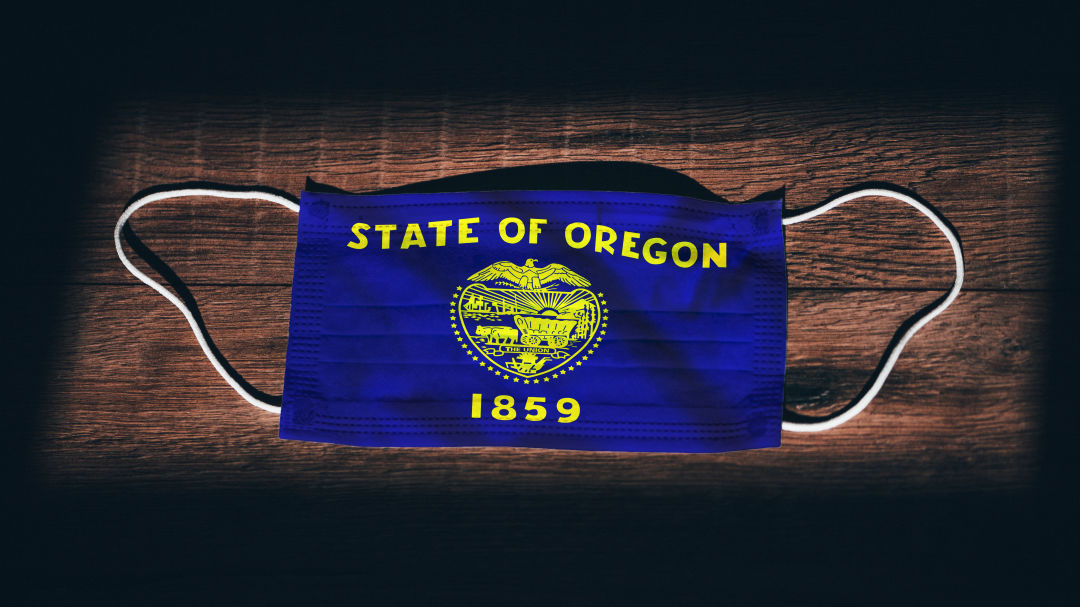As COVID Numbers Rise, Gov. Kate Brown and OHA Institute New Two-Week 'Freeze'

During a somber press conference, the governor was joined by health experts to announce the new, strict measures in the wake of record-breaking caseloads.
Oregon Gov. Kate Brown is placing the entire state under a two-week "freeze," she announced on Friday, to combat a spike in COVID-19 cases and hospitalizations.
During a somber press conference, the governor was joined by health experts to announce the new, stricter measures in the wake of record-breaking caseloads (1,122 positive cases were recorded on Thursday, November 12).
The "freeze" begins for businesses on November 19 and lasts through December 2, though Brown said counties where cases are spiking, such as Multnomah, should prepare for these restrictions to last for at least four weeks, and perhaps longer.
The new rules limit restaurants and bars to take-out service only; cap grocery and retail stores at 75 percent capacity, with curbside pickup “strongly encouraged”; require businesses to mandate working from home where possible; close gyms, museums, and venues that hold indoor and outdoor events; limit worship services to 25 people indoors and 50 outdoors; and, crucially, limit social interactions to two households or no more than six people.
Brown urged keeping masks on in all indoor and outdoor settings involving anyone not in your household, when not actively eating or drinking.
Speaking at the conference, state health officer and epidemiologist Dr. Dean Sidelinger summed up the need for the change in just two words: “Social gatherings.” Sidelinger said the state has seen a 47 percent increase in coronavirus cases just since last week, and that a majority of these transmissions have been occurring at social gatherings, including two Halloween parties, one of which was attended by more than 100 people.
“COVID-19 is raging across Oregon,” Sidelinger said. “Maybe we thought the fight was over, but it’s not.”
Esther Choo, an ER physician and professor at OHSU, and Renee Edwards, chief medical officer at OHSU, said hospital systems statewide are in danger of being overwhelmed. Edwards said that roughly 20 percent of the Oregonians diagnosed today with COVID-19 (1,076), “will become ill enough to require hospitalization in the next two to three weeks. Some will die, increasing the number of souls tragically lost because of this pandemic.”
“Many of you cheered and rang bells and put up signs calling us heroes, and we’re so grateful for that," Choo said. "Right now, we’re asking you to be our heroes and to listen to our call for help again.”
With no federal stimulus bill in sight for the Oregonians who may be furloughed or lose their job completely as a result of these new regulations, the economic repercussions could be severe. Brown said she was aware of the financial impact the freeze would have on local restaurants and small businesses already struggling in after an unprecedented wildfire season and in the midst of a global pandemic, pointing to US Rep. Earl Blumenauer’s efforts in Congress to pass a financial aid package specifically for restaurants.
The holiday season hung over the afternoon’s press conference, but Brown said the upcoming holidays will look different and, in a year full of it, will require even more sacrifice to protect ourselves and all Oregonians.
“This is a collective call for sacrifice.” Brown said. “As this virus has really taught is, we are truly in this together.”
Per press release from Gov. Kate Brown, the two-week freeze restrictions include:
- Limiting social get-togethers (indoors and outdoors) to no more than six people, total, from no more than two households.
- Limiting faith-based organizations to a maximum of 25 people indoors or 50 people outdoors.
- Limiting eating and drinking establishments to take-out and delivery only.
- Closing gyms and fitness organizations.
- Closing indoor recreational facilities, museums, indoor entertainment activities, and indoor pools and sports courts.
- Closing zoos, gardens, aquariums, outdoor entertainment activities, and outdoor pools.
- Limiting grocery stores and pharmacies to a maximum of 75% capacity and encouraging curbside pickup.
- Limiting retail stores and retail malls (indoor and outdoor) to a maximum of 75% capacity and encouraging curbside pickup.
- Closing venues (that host or facilitate indoor or outdoor events).
- Requiring all businesses to mandate work-from-home to the greatest extent possible and closing offices to the public.
- Prohibiting indoor visiting in long-term care facilities (outdoor visitation permitted for supporting quality of life).
Read Gov. Brown's full statement here.




